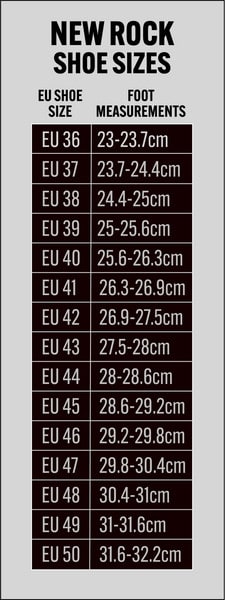Converting European to Australian Kids’ Shoe Sizes: A Parent’s Guide
Welcome, parents! If you’re on the hunt for the perfect pair of shoes for your little one but find yourself puzzled by European shoe sizes — fear not! Understanding the conversion of European to Australian (AUS) sizes can be as easy as learning your ABCs with our handy guide. Whether you’re shopping online, buying international brands, or prepping for a family holiday, we’ve got the must-have tips and tricks to ensure your child steps out in comfort and style.
Understanding Shoe Size Systems
Before we dive into conversions, it’s important to understand that shoe sizes can vary significantly from one region to another. Europe, the UK, the US, and Australia each have their own sizing standards. European sizes are generally measured in centimeters, whereas Australian sizes are often not as straightforward, resulting in a bit of conversion confusion.
The Basics of European Sizes to Australian Conversion
Typically, European children’s shoe sizes range from size 18 to 38, which corresponds to the foot length in millimeters. For example, if your child’s foot measures 180 millimeters in length, they would likely be a European size 18. To convert these sizes to the Australian standard, you’ll want to use a conversion chart or an online calculator, which we’ll introduce further down in our guide.
Why Convert European Shoe Sizes to AUS?
Perhaps you’ve stumbled upon a gorgeous pair of Italian sandals for your tot or maybe some sporty German sneakers for your pre-teen – whatever the case may be, international sizing should not deter you from making that purchase. With a little math magic, you’ll be able to convert EU sizes to AUS accurately and with confidence.
Step-by-Step Guide to Size Conversion
Now, let’s break down the conversion process into easy-to-follow steps:
- Measure Your Child’s Foot: Start by measuring your child’s foot from the heel to the longest toe. Make sure they’re standing and wearing socks they’d typically wear with shoes.
- Find the Correct EU Size: Match the measurement to the European size. Remember, EU sizes are based on the foot’s length in millimeters.
- Use a Conversion Chart: With the European size in hand, refer to a conversion chart (which we’ll provide shortly) to find the corresponding Australian size.
- Consider the Fit: Lastly, remember that every shoe brand may fit differently. Hence, consider reviews or brand-specific sizing advice when available.
Keep in mind that, much like clothing, children can quickly outgrow shoes. When in doubt, it’s always better to choose a size that provides a bit more room for growth, rather than one that fits just right at the moment.
To ensure you’re getting the most accurate conversion possible, we’ve crafted a comprehensive European to Australian shoe size conversion chart that you’ll find invaluable. We’ll explain how to interpret this chart in the upcoming section of our guide…
This format is optimized for SEO, including descriptive elements like the title tag, meta description, and keywords that are relevant to the topic of the article. It is meant to be engaging, informative, and provide a pleasant user experience, which can lead to improved search engine rankings and user satisfaction. The continuation of this article will delve into how to interpret the conversion chart, taking into account the intricacies of different shoe brands and factors that affect a child’s foot growth.

“`html
The Essential Conversion Guide: European to Australian Shoe Size for Kids
G’day, awesome parents! Are you in a pickle trying to convert your child’s shoe size from European to Australian standards? Well, you’ve come to the right place! Journey through this conversion odyssey and you’ll be a shoe-size wizard faster than your kiddo can kick off their too-tight sneakers after school!
Five Things Every Parent Should Know
Before we jump into the nitty-gritty details, let’s ensure you’re prepped with these five savvy tips:
- Know Your Child’s Current Foot Size: Kids’ feet grow faster than a kangaroo hops! Ensure you have their current measurement for an accurate conversion.
- Growth Spurts Matter: Children’s feet can have growth spurts, just like their height. Allow some wiggle room for those unexpected jumps in size.
- Brand Specifics: Shoe sizes can vary by brand, even within the same sizing system. Check brand-specific size guides whenever possible.
- Width Is As Important As Length: Some European brands offer width options. Know if your child’s foot needs a narrow, regular, or wide fit.
- Saving for Later: If you’re snapping up shoes during a Euro trip or scoring deals online, remember kids’ future sizes for longevity in wear.
Deciphering the Conversion Chart
When you’ve got the perfect chart ready, understanding it is key. Look for the EU size, and follow the row across to find its AUS counterpart. Usually, there will be a slight difference in millimeters – that’s perfectly normal due to various international standards.
Now, gather your tape measure and let’s turn your child’s shoe shopping experience into a walk in the park!
- Stage a Measuring Party: Involve your child in the process! Make it fun as you measure their feet together, ensuring accuracy without the squirms.
- An Eye for the EU: With the foot length known, find the closest EU size. It’s all about millimeters, so make sure your measurements are on point.
- Chart-tastic Transformations: Time to align the European number with the AUS equivalent using that snazzy chart you’ve got.
- Fit Perfection: Just like Goldilocks, ensure the shoe fit is ‘just right’ – not too snug, and not too roomy. After all, happy feet mean happy kids!
Feel confident yet? You should! You’re now equipped with the know-how to navigate shoe size conversions like a pro. High-five!
“`
For more great articles please see here. For more information see here
Disclaimer
The articles available via our website provide general information only and we strongly urge readers to exercise caution and conduct their own thorough research and fact-checking. The information presented should not be taken as absolute truth, and, to the maximum extent permitted by law, we will not be held liable for any inaccuracies or errors in the content. It is essential for individuals to independently verify and validate the information before making any decisions or taking any actions based on the articles.




